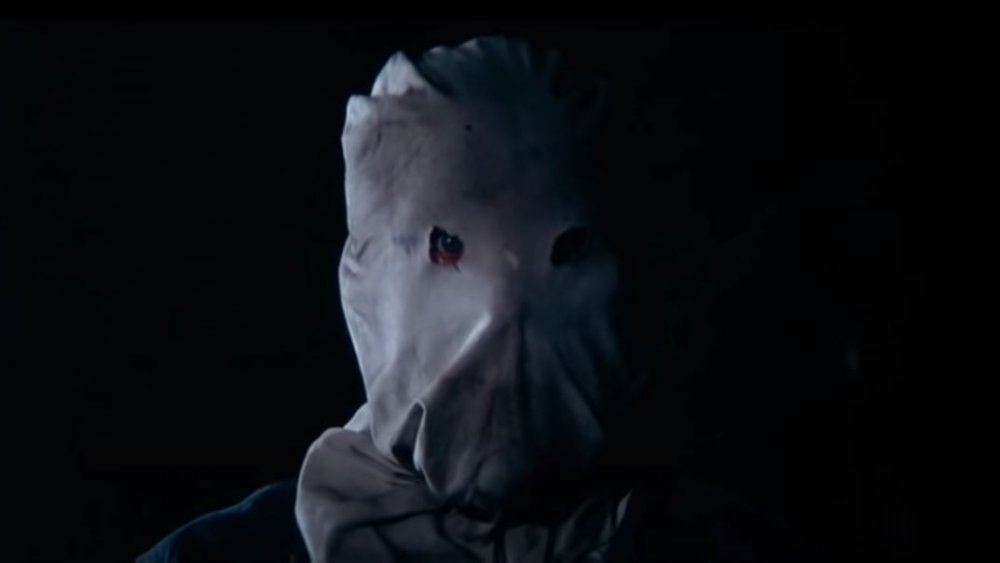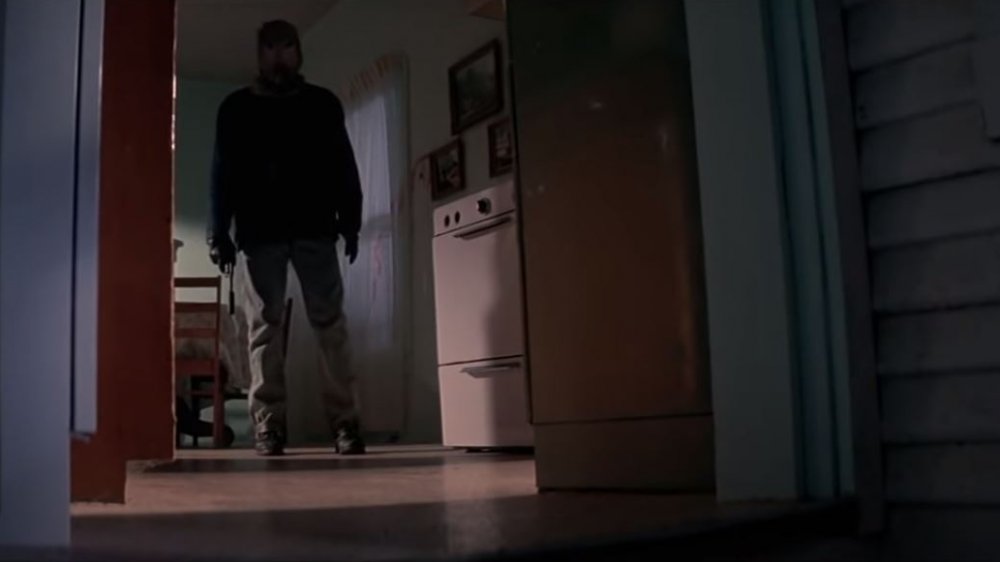The Creepy Inspiration For The Town That Dreaded Sundown
The opening shots from 1976's The Town that Dreaded Sunset depict the quaint Texas town of Texarkana rebounding from World War II. It's getting on its feet, the narrator says, while soldiers are still trickling into town, couples are getting married, and people are queuing to buy cars and household appliances. In short, it's the perfect vision of Americana, ready to he ruined by some crazed killer. The narrator goes on to say that the story is completely true. While not 100% factual — there is creative liberty with details, such as the death-by-knife-taped-to-trombone scene — the core narrative is relatively accurate. The result is a standard slasher film in the vein of Friday the 13th or Halloween, but laced with some extra creepiness and an interestingly nuanced performance by the killer.
Thirty years prior to the release of The Town that Dreaded Sunset, the Phantom Killer stalked Texarkana's nights, as described by the 13th Floor. His M.O. was clear — couples engaged in romantic moments. From February to May, 1946, in what would come to be known as "The Texarkana Moonlight Murders," four couples were assaulted by a man in a white mask with holes cut out for eyes. Each crime got progressively more daring and aggressive, in what seemed to be a clear case of a killer figuring out his methods as he went. There was a cross-county manhunt, suspects were questioned, and even the Texas Rangers were called into the fray (but no Chuck Norris).
The original sackcloth-hood killer
Jimmy Hollis and his girlfriend Mary Jeanne Larey were the first victims of the Phantom Killer, in an almost stereotypical setup: in their car, along a lover's lane on the outskirts of town, at midnight, February 22, 1946. They were attacked, beaten, but not killed, in what seemed to be merely an armed robbery. By the time the second couple was assaulted it was clear to the police that there was a pattern to the attacks. The second couple, Richard Griffin and his girlfriend Polly Ann Moore, were not so lucky, however, as they were shot execution-style along another lover's lane. Paul Martin and his friend Betty Jo Booker were the third victims, who left a club at night and were found dead by morning. This time, there was evidence of sexual assault. This final victims, Virgil and Katie Starks, were actually assaulted inside their homes, shot through the window at night. Katie managed to crawl away to a neighbor's house even though she'd been shot twice in the face.
The Phantom Killer received his moniker because he never left any evidence, was never identified, and vanished from crime scenes without a trace. For ten weeks he prowled Texarkana like a ghost, and in turn, made Texarkana a ghost town, leading to police barricades, hunting dogs, boarded-up windows, extra locks on doors, curfews, police rewards, paranoia and accusations, and a couple wrongfully chosen suspects. In the end, it all amounted to nothing, when the killings mysteriously stopped.

